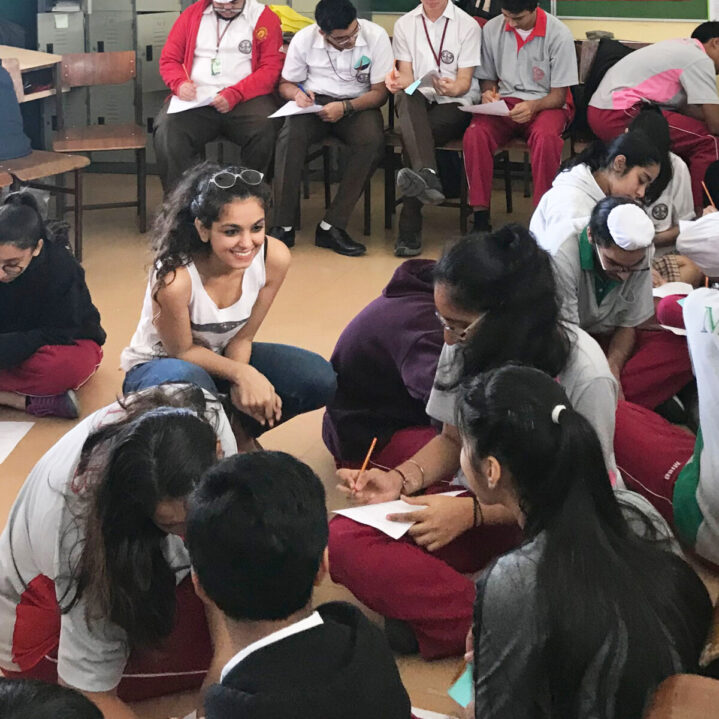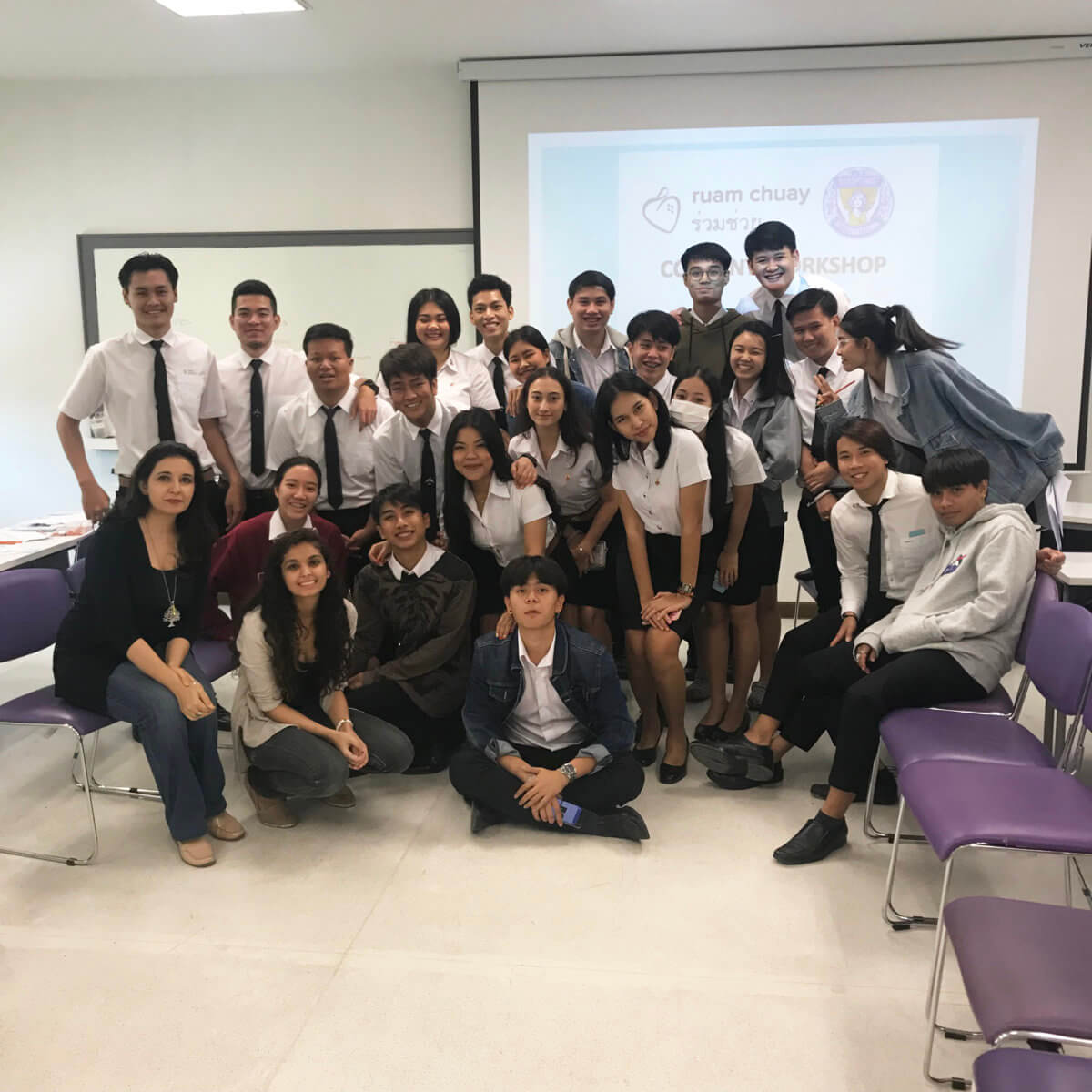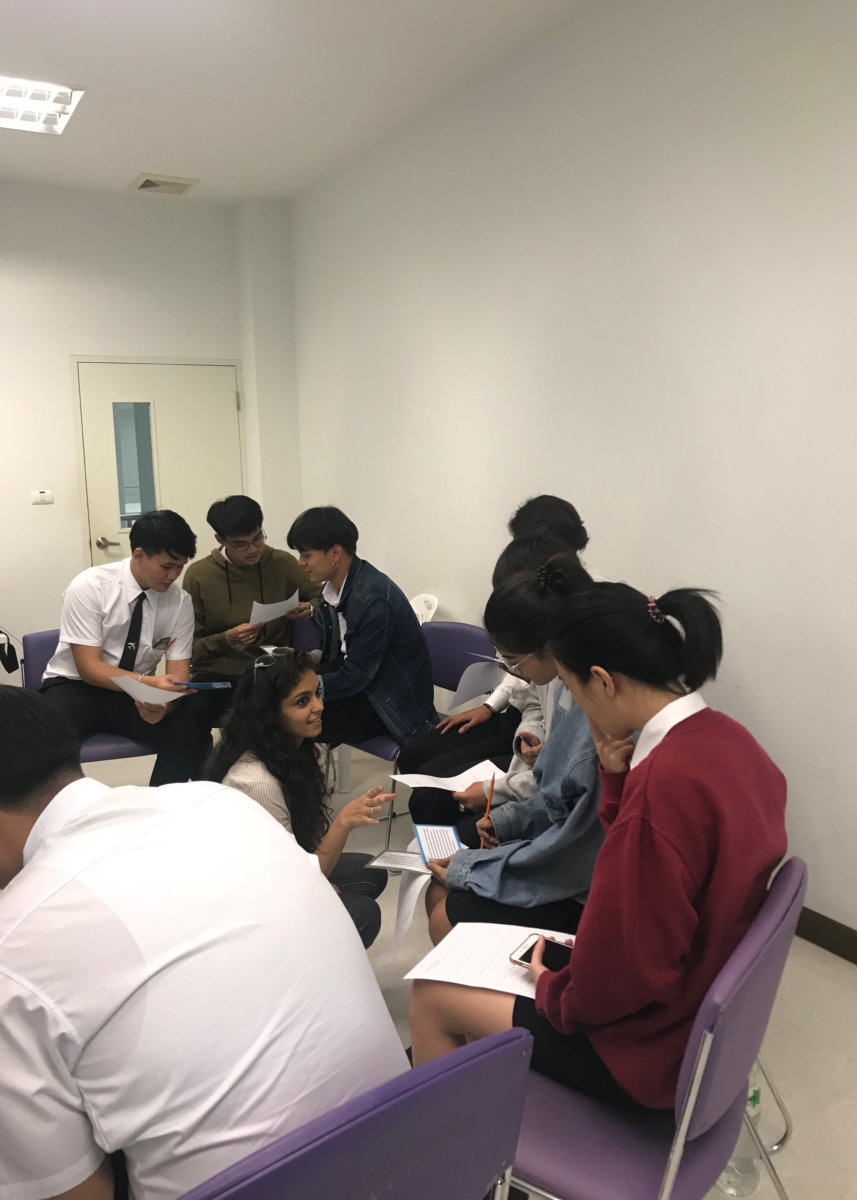
How to use conflict to strengthen your relationships
With your family and your partner and yes even with your parents
When was the last time you had a disagreement with someone you cared about? Likely, not too long ago. Conflict in our relationships is a source of a lot of stress for many of us.
At Ruam Chuay, we run workshops on safer relationship skills as part of our interpersonal violence prevention programme. In one of our workshops, we spent some time exploring conflict in intimate relationships and families. At the beginning of the session, we asked the students what they think of conflict. Is it positive, negative, or neutral?
The responses were split across the participants, they either answered that they felt conflict was negative or neutral. No one categorised conflict as positive. Given that often when we experience conflict it is usually accompanied by heightened emotions and intense feelings, this response wasn’t surprising to us.
How do you view conflict?
One of the reasons we are interested in how we respond to conflict and include this within our violence prevention programme is because it is important to distinguish between healthy conflict and emotional abuse. Emotional abuse is when someone uses their words or actions to control or dehumanise another person. This one of the four types of harm we work to prevent. Whereas, healthy conflict is a normal part of our relationships. One of our goals is to equip students with skills and help them learn how to navigate conflict safely.
When faced with a conflict with a partner, parent, sibling, or friend, we all react differently. Some people have a tendency to want to avoid addressing the issue, others want to deal with it right away, some need a little time, and others find themselves somewhere in the middle – wanting to address but not knowing exactly how to navigate the situation.
Our response is typically dependent on how we make sense of and understand conflict. How we understand conflict is based on a few factors. One of them is how we have seen conflict play out in our family and society before. Bobbie Harro describes this process as the cycle of socialisation. The cycle, Harro illustrates, begins in childhood on a personal level from our parents, relatives, and teachers. They are reinforced by institutions and cultural norms we grow up in, such as schools and the media. The result is that we often mirror what we are taught and our thoughts and actions are influenced by the messages we absorb. This cycle applies to many different parts of our lives, including how we perceive conflict.
This is why we posed the question about how the students feel about conflict at the beginning of the workshop. We want to understand what their current perception of conflict is. Which, as shared earlier, was either negative or neutral. While the response was not too surprising to us – given that, typically, socially and culturally, we see conflict as a problem to solve – it was one that we were there to examine together and begin to change.
Conflict in and of itself is not negative or positive. The emotions conflict triggers and the feelings surrounding it are what we categorise as negative or positive. A quick note that we define emotions as the neurobiological and physical response that happens in our body. Whereas, feelings are the way we make sense of these emotions through our beliefs and perception, as described by neurologist Antonio R. Damasio, along with a handful of psychologists and researchers2.
So, how do we view conflict? We see conflict as a signal.
Conflict is a signal that there is something deeper going on beneath the surface. It is the tip of the iceberg. If you have ever found yourself caught in the same argument over and over again, with the same person, you have likely experienced what we call only addressing the surface level issue.
When we think of conflict we see it in two layers: the surface level issue and, beneath this, the root cause. When we get into an argument with someone we care about, many of us resolve or deescalate the situation, without taking the time to examine the root cause.
For example, let us say two people who live together are arguing over a messy room. One person might be annoyed the other person always leaves their bags on the floor making the room look untidy. They argue over putting the bags away and decide that moving forward the bags belong in a closet. At that moment, the conflict is considered resolved. Until this happens again. This is because they only addressed the surface level issue.
What could be the root cause? After a conversation, they find out that the person who wants the bags to be put away cares about having a clean space because they feel their space is a reflection of who they are and they like being organised. Whereas, the person who leaves their bags on the floor does it because it’s convenient and they like when things are easily accessible to them. The root cause is a difference in what they value. One person values organisation, while the other values convenience. If you examine some of their other conflicts closely, you might find this root cause shows up in situations too, with different surface level issues.
This example is of a more common type of argument. But, this approach can be applied to more serious issues and topics too. Including the ones we consider taboo. At Ruam Chuay, we create safe spaces for us to discuss topics such as family violence, dating violence, and sex. Many of us instinctively consider these topics taboo. In large part, due to how we are socialised (recall the cycle of socialisation mentioned earlier). When discussing these topics, due to the personal and sensitive nature, people often have disagreements with others about them. Especially if they have different perspectives and levels of understanding of the issue being discussed. Just as described earlier, we take the time to explore the surface level issue and then examine the root cause. Before moving into finding solutions.
Get to the root cause to create connection.
We have created these spaces with over 800+ people. The majority of the time, if we are able to get to the root cause, we are able to turn moments of tension into moments of connection. We build better understanding between people involved in these necessary conversations.
If we take our previous example, the argument over the bags, we might be able to see how people can understand each other better when they hear what the other person values, instead of where the bags will be stored in the house.
Building this type of understanding in our relationships, whether that is with a parent, partner, sibling, or friend, helps us begin to take steps towards actually addressing our conflicts for the long term. It is also the first step to forming better relationships and connection with the people we care about and creating change.
We understand that this is easier said than done. Navigating conflict safely, and effectively, is an essential relationship skill. Like any skill, it can be learned. At any age. Ruam Chuay’s work is unique in that, not only are we the first and only organisation of its kind in Thailand, but we our work is intergenerational – we work with young adults, parents, and grandparents. We run workshops on safer relationships skills where we explore what safe vs. unsafe relationships look like, understand the lens and perspective to help you strengthen your relationships, and go through tangible exercises to help you put this into practice.
Doing this work, we see firsthand how a seemingly simple shift in our perception looking at conflict as a signal instead of something negative, neutral, something to avoid, brush off, or deal with head on quickly, makes all the difference. It allows us to change how we approach conflict. Making it less stressful, and more useful. Enabling us to use conflict as an entry point to have meaningful conversations that can help us strengthen our relationships. And, importantly, create safer relationships.
If you would like to become an advocate for change and help create safer communities, we invite you to join us. After all, “Ruam Chuay” translated to English means “collective support.”
Refer us or bring a facilitated workshop and talk to your school or organisation by contacting us directly at [email protected]
1Harro, B. (2013). The Cycle of Socialisation. M. Adams (Ed.), In Readings for Diversity and Social Justice (pp. 45-52). Routledge Taylor & Francis Group. Lenzen, M. (2005). Feeling Our Emotions. Scientific American.






